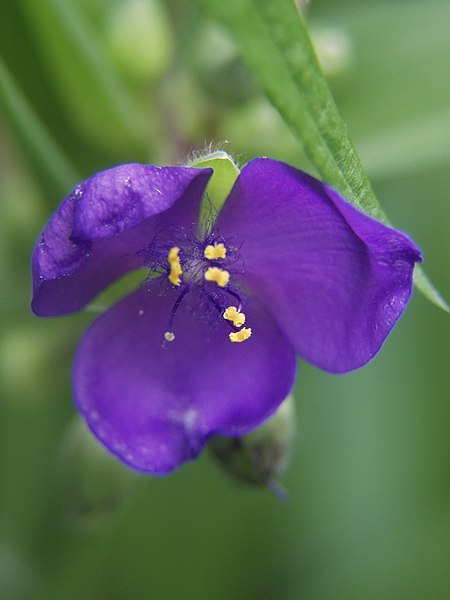
Two close-up pictures of the same plant growing beside a street in Beechview. The deep violet, or “rich purplish-blue” as Gray describes it, is very hard to capture with a digital camera, which always seems to want to make the petals much bluer than they are; old Pa Pitt worked hard in the GIMP to match the color of the living flower.
We have seen Spiderworts before (ten years ago!), and we’ll repeat what we said then:
A native plant that is perhaps even more common in gardens than in the wild; the purple to blue flowers with three equal petals and the linear, almost grasslike leaves are distinctive. The closest common relatives in our area, the Dayflowers, have three unequal petals and much shorter leaves. Like Dayflowers, these bloom in the morning and disappear by the middle of the afternoon.

Gray describes the genus and the species:
TRADESCÁNTIA [Rupp.] L. SPIDERWORT. Flowers regular. Sepals herbaceous. Petals all alike, ovate, sessile. Stamens all fertile; filaments bearded. Capsule 2-4-celled, the cells 1-2-seeded — Perennials. Stems mucilaginous, mostly upright, nearly simple, leafy. Leaves keeled. Flowers ephemeral, in umbeled clusters, axillary and terminal, produced through the summer; floral leaves nearly like the others. (Named for the elder Tradescant, gardener to Charles the First of England.)
T. virginiàna L. Green; leaves flat, linear or lance-linear, the upper moге or less pubescent; bracts leaf-like, elongated, usually ascending; pedicels and sepals villous, the latter about 1.6 cm. long; petals rich purplish-blue, 1.6-2 cm. long — Alluvial soil, Ct. to Pa. and S. C.: also introd. northw.
